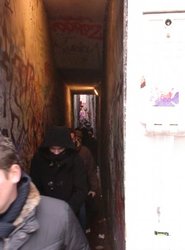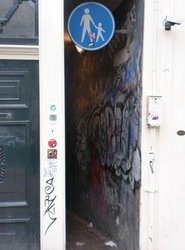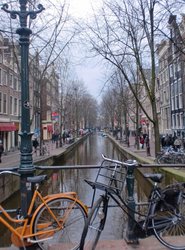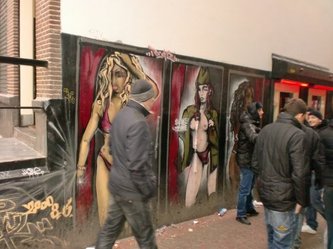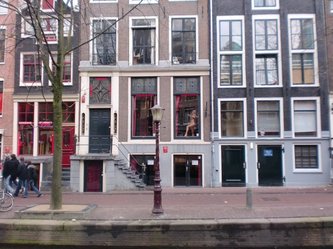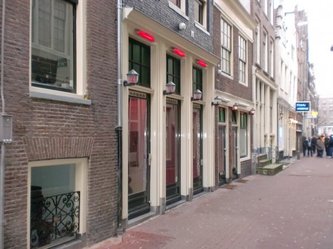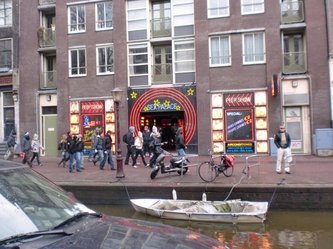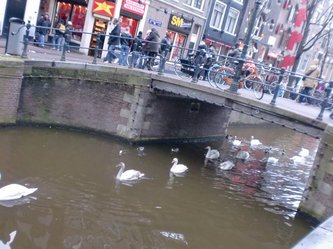Human Trafficking
Sex Trafficking
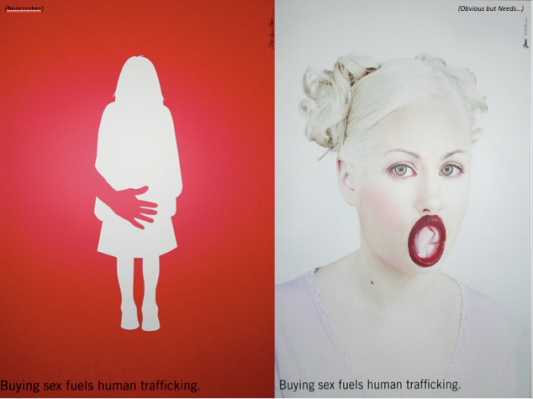
The Trafficking Protection Act of 2000 defines sex trafficking as the "recruitment, harboring, transportation, provision, or obtaining of a person for the purpose of a commercial sex act, in which a commercial sex act is induced by force, fraud, or coercion, or in which the person force to perform such as an act is under the age of 18 years" (United States...Health).
Sex trafficking is the most popular form of exploitation for women with 70% of trafficked women being trafficked into the commercial sex trade (Human Trafficking Statistics). Victims also include children with 1 million children sexually exploited every year (Human Trafficking Statistics). Sex trafficking is growing at a rapid rate because the supply of potential victims seems endless. Women and children are easily targeted because they are most vulnerable. In many developing countries, women do not have opportunities for education and work. The belief that women are basically useless other than for the purpose of baring children and marriage is still prominent today. Due to this belief unmarried women or those that are no longer virgins are looked at as nothing better than something that can be used over and over again. Factors such as poverty, military conflict and economic globalization also add to the accessibility to potential slaves (Kara). The impact of the factors that contribute to the supply of sex slaves becomes obvious when examining the primary regions of sex trafficking. Sex trafficking is essentially everywhere, but primary regions emerged in the 1990's- South Asia, Central and Eastern Europe and East Asia (Kara).
Sex trafficking is the most popular form of exploitation for women with 70% of trafficked women being trafficked into the commercial sex trade (Human Trafficking Statistics). Victims also include children with 1 million children sexually exploited every year (Human Trafficking Statistics). Sex trafficking is growing at a rapid rate because the supply of potential victims seems endless. Women and children are easily targeted because they are most vulnerable. In many developing countries, women do not have opportunities for education and work. The belief that women are basically useless other than for the purpose of baring children and marriage is still prominent today. Due to this belief unmarried women or those that are no longer virgins are looked at as nothing better than something that can be used over and over again. Factors such as poverty, military conflict and economic globalization also add to the accessibility to potential slaves (Kara). The impact of the factors that contribute to the supply of sex slaves becomes obvious when examining the primary regions of sex trafficking. Sex trafficking is essentially everywhere, but primary regions emerged in the 1990's- South Asia, Central and Eastern Europe and East Asia (Kara).
"Legalizing prostitution will increase trafficking?"
According to the State Department website, "Where prostitution is legalized or tolerated, there is a greater demand for human trafficking victims and nearly always an increase in the number of women and children trafficked into commercial sex slavery. Oddly, the Netherlands, Australia, and Germany-all of whom have legalized prostitution-received top marks from the Bush Administration in the most recent Trafficking in Persons Report" (Freingold).
Visiting Amsterdam's Red Light District
Researching, I learned that sex trafficking was both most prominent and less prominent in locations that tolerated or legalized prostitution. I believed that I could look to the U.S State Department to answer my question, but found that even this information contradicted itself. If prostitution is effective as an anti-trafficking incentive or not, I am still not exactly sure. Either way, I recently traveled to the Netherlands and was thus presented with the opportunity to visit Amsterdam's famous Red Light District.
Amsterdam's Red Light District is a major tourist attraction; though labeling a red light district as a tourist attraction personally sounds wrong to me, I can not deny this fact. People around the world are curious to witness the legalization of prostitution in Holland and though I went for more of an educational purpose, I too was a spectator.
Prostitution in Holland was essentially made legal for harm reduction purposes and through the belief that the enforcement of the anti-prostitution laws would be counterproductive (Red Light District...). The government attempts to regulate prostitution and monitor working practices and standards. Authorities aim at protecting minors and protecting women against exploitation (Red Light District...). Here again, we are presented with the same question, does legalization decrease or increase trafficking? The recent Trafficking in Persons Report makes me believe that legalizing prostitution does has a positive affect, still others seem to oppose. In the French Newspaper, Le Monde Diplomatique, Marie-Victoire Louis wrote in her article, "Legalizing Pimping, Dutch Style" that 80% of prostitutes in Amsterdam are foreigners and 70% have no immigration papers" thus suggesting that they were trafficked (Louis).
When I visited the Red Light District, I solely experience the surface and thus do not know whether the Trafficking in Persons Report is correct or if Marie-Victoire Louis is correct. My curiosity desperately wanted to speak with the prostitutes and ask them about their situation, but this is definitely not recommended when taking even pictures is prohibited. Instead, I observed as I walked through the narrow streets that were crowded with people. As I walked, I passed a continuous row of large windows (formally known as aquariums) that touched the streets. Red lights lined the top of the windows shining a seductive light on the women who flaunted beneath. I could not help, but stare in the women's eyes as I passed them one by one. Some eyes seemed lost, others glazed, while others seemed to have fire in them, trying so hard to grab the attention of the men. When the attention was caught, I stared shocked when the window doors would open and a man or sometimes more would enter. The red curtain then closed shut. Why I was shocked when I witnessed prostitutes bargaining prices with men, I don't know since this is the intention; this is the way they earn money to live.
Amsterdam's Red Light District is a major tourist attraction; though labeling a red light district as a tourist attraction personally sounds wrong to me, I can not deny this fact. People around the world are curious to witness the legalization of prostitution in Holland and though I went for more of an educational purpose, I too was a spectator.
Prostitution in Holland was essentially made legal for harm reduction purposes and through the belief that the enforcement of the anti-prostitution laws would be counterproductive (Red Light District...). The government attempts to regulate prostitution and monitor working practices and standards. Authorities aim at protecting minors and protecting women against exploitation (Red Light District...). Here again, we are presented with the same question, does legalization decrease or increase trafficking? The recent Trafficking in Persons Report makes me believe that legalizing prostitution does has a positive affect, still others seem to oppose. In the French Newspaper, Le Monde Diplomatique, Marie-Victoire Louis wrote in her article, "Legalizing Pimping, Dutch Style" that 80% of prostitutes in Amsterdam are foreigners and 70% have no immigration papers" thus suggesting that they were trafficked (Louis).
When I visited the Red Light District, I solely experience the surface and thus do not know whether the Trafficking in Persons Report is correct or if Marie-Victoire Louis is correct. My curiosity desperately wanted to speak with the prostitutes and ask them about their situation, but this is definitely not recommended when taking even pictures is prohibited. Instead, I observed as I walked through the narrow streets that were crowded with people. As I walked, I passed a continuous row of large windows (formally known as aquariums) that touched the streets. Red lights lined the top of the windows shining a seductive light on the women who flaunted beneath. I could not help, but stare in the women's eyes as I passed them one by one. Some eyes seemed lost, others glazed, while others seemed to have fire in them, trying so hard to grab the attention of the men. When the attention was caught, I stared shocked when the window doors would open and a man or sometimes more would enter. The red curtain then closed shut. Why I was shocked when I witnessed prostitutes bargaining prices with men, I don't know since this is the intention; this is the way they earn money to live.
Photos from my Trip
Lauran Bethell reveals the reality of the Red Light District
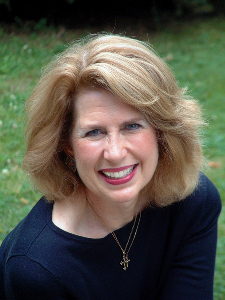
Visiting the Red Light District certainly only allowed me to witness the surface of the district, however I was curious to understand what was hiding behind the legalization of prostitution. To answer my questions, I sought contact with Lauran Bethell who works as an International Consultant for the International Ministries and is based in the Netherlands. As an International Consultant, Bethell travels frequently, raising awareness, developing networks among projects and facilitating the development of new projects. When she is not traveling, she volunteers with an organization that works in the red-light districts of the Netherlands. In Amsterdam, she assist the organization with the development of their international dimensions (sharing their print resources throughout Europe) and meets with women in prostitution with their outreach workers in Utrecht, a city south of Amsterdam.
Through speaking with Bethell, I learned that many of my initial beliefs about the district were false. Uncover my discoveries through a few questions that I asked her below...
1) Are you personally able to visit and speak with victims of sex trafficking?
About twice a month, I visit women in red-light districts in Holland, but the incidence of "sex-trafficking" in Holland really is on a continuum from "forced" to "coercion" to " facilitated". I have met women who were "forced"--but after they had gotten out and been able to leave prostitution. On occasion, my colleagues do meet women who are "forced", but it is not the norm. The most common scenario-especially for the women from Eastern Europe-is that they come to The Netherlands in order to make money to send home to their families. For the most part, they know that they will be working in prostitution-but they have no idea that it will be as "coercive" or violent-or that they'll have to pay so much money to so many people (the owner of the brothel, a "body-guard", pimp, etc.) After they get here, they find that they have debts to pay for their transportation, passports, etc. before they can leave. When they ARE able to send money home, then they will continue to work to do that.
The Dutch women working in prostitution are very often victims of what the Dutch call "lover-boys"--really pimps, who develop co-dependent relationships with teen-age girls who have low-self-esteem, with the intent that they will have them working in prostitution as soon as they turn 18. In some places, this is also called "grooming"--I've referred to it here as " facilitation". And many (some would say most) young women involved in prostitution in developed countries (like the USA) were victims of childhood sexual abuse, which wounds the soul of a young women, rendering her vulnerable to "groomers". Most of the young women working in prostitution are in one of the above categories.
I often say that "human trafficking = the exploitation of vulnerability" : it could be the vulnerability of cultural expectations, the vulnerability of childhood sexual abuse, the vulnerability of self-esteem. And when that vulnerability is exploited by a pimp, or groomer or trafficker or lover-boy-then there is a situation of human trafficking.
2) How often are you aware that the prostitutes in the Red Light District are not freely participating in this?
Most of the women I talk to do not talk about "not freely participating". Nearly all the women from foreign countries are sending money back to their families-and their families expect that. So it's not that they are held captive by a pimp. The reality is that they are "held captive" by cultural expectations that would dictate that the daughter or the wife is economically responsible for her family. Yes, the pimp profits, certainly, as the " middle-man" who may have made false promises. But generally, the women are also able to fulfill family responsibilities by being there. Human trafficking is filled with so many "grey areas".
There are fewer and fewer local (Dutch) women working in prostitution in the red-light districts. It's possible that there is a higher percentage working from the internet. The Dutch women are the most reluctant to talk to us, but when they do let us "below the surface" they often reveal a kind of " addiction" to prostitution and its money. Sometimes when they want to leave because they realize the kind of psychological/emotional harm they are doing to themselves (by their own admission), they find it as difficult as ending a drug habit. 12-step programs are often effective in helping these women move on.
3)What are your hopes and goals with your participation in the efforts to combat human trafficking?
It's exciting to me that I see so many people wanting to become involved with the issues. Increasing numbers of people are going into the streets to develop relationships with people in prostitution (both women AND men) and offering them unconditioned caring and love. In this way, the people in prostitution are able to begin to face the issues.
Though I will continue to be passionate about outreach into red-light districts, I think a major key to combating human trafficking is prevention. In Holland, the organization work goes into high schools with a very well developed "lover boy prevention curriculum", and educates girls of the vulnerablities ages of 14-15-16-17 about lover boys-and more importantly, healthy relationships and self-esteem. In developing countries, there is a great need to target vulnerable communities and intervene with good economic development and an emphasis on girls' education. And these things are happening!
Work Cited
Human Trafficking Statistics. Washington D.C.: Polaris Project. PDF file.
Feingold, David A. “Human Trafficking.” Foreign Policy 150 (Sept.-Oct. 2005): 26-30,32. JSTOR. Web. 16 Apr. 2010. <http://www.jstor.org>.
“Red Light District in Amsterdam.” Amsterdam.info. Amsterdam Guide, 2010. Web. 2 Mar. 2010. <http://www.amsterdam.info/red-light-district/>.
Louis, Marie Victoire, comp. Marie-Victoire Louis, le site. Mathieu Boulommier, n.d. Web. 9 Apr. 2010. <http://www.marievictoirelouis.net/document.php?id=751&themeid=740>.
United States. Health and Human Services. Human Trafficking Fact Sheets. Washington: GPO, 2007. Print.
Feingold, David A. “Human Trafficking.” Foreign Policy 150 (Sept.-Oct. 2005): 26-30,32. JSTOR. Web. 16 Apr. 2010. <http://www.jstor.org>.
Louis, Marie Victoire, comp. Marie-Victoire Louis, le site. Mathieu Boulommier, n.d. Web. 9 Apr. 2010. <http://www.marievictoirelouis.net/document.php?id=751&themeid=740>.
United States. Health and Human Services. Human Trafficking Fact Sheets. Washington: GPO, 2007. Print.
Work Cited Pictures
Lauran Bethell. 2009. International Ministries. American Baptist International Ministries, 2010. Web. 12 Apr. 2010. <http://www.internationalministries.org/read/18299>.
Neocorsten. Obvious but Needs to be Said. 17 June 2006. FlickrCC. N.p., 19 June 2006. Web. 4 Apr. 2010. <http://www.flickr.com/photos/21253420@N00/4127727636>.
- - -. Obvious but Needs to be Said. 17 June 2006. FlickrCC. N.p., 19 June 2006. Web. 4 Apr. 2010. <http://www.flickr.com/photos/21253420@N00/4127727636>.
Neocorsten. Obvious but Needs to be Said. 17 June 2006. FlickrCC. N.p., 19 June 2006. Web. 4 Apr. 2010. <http://www.flickr.com/photos/21253420@N00/4127727636>.
- - -. Obvious but Needs to be Said. 17 June 2006. FlickrCC. N.p., 19 June 2006. Web. 4 Apr. 2010. <http://www.flickr.com/photos/21253420@N00/4127727636>.
